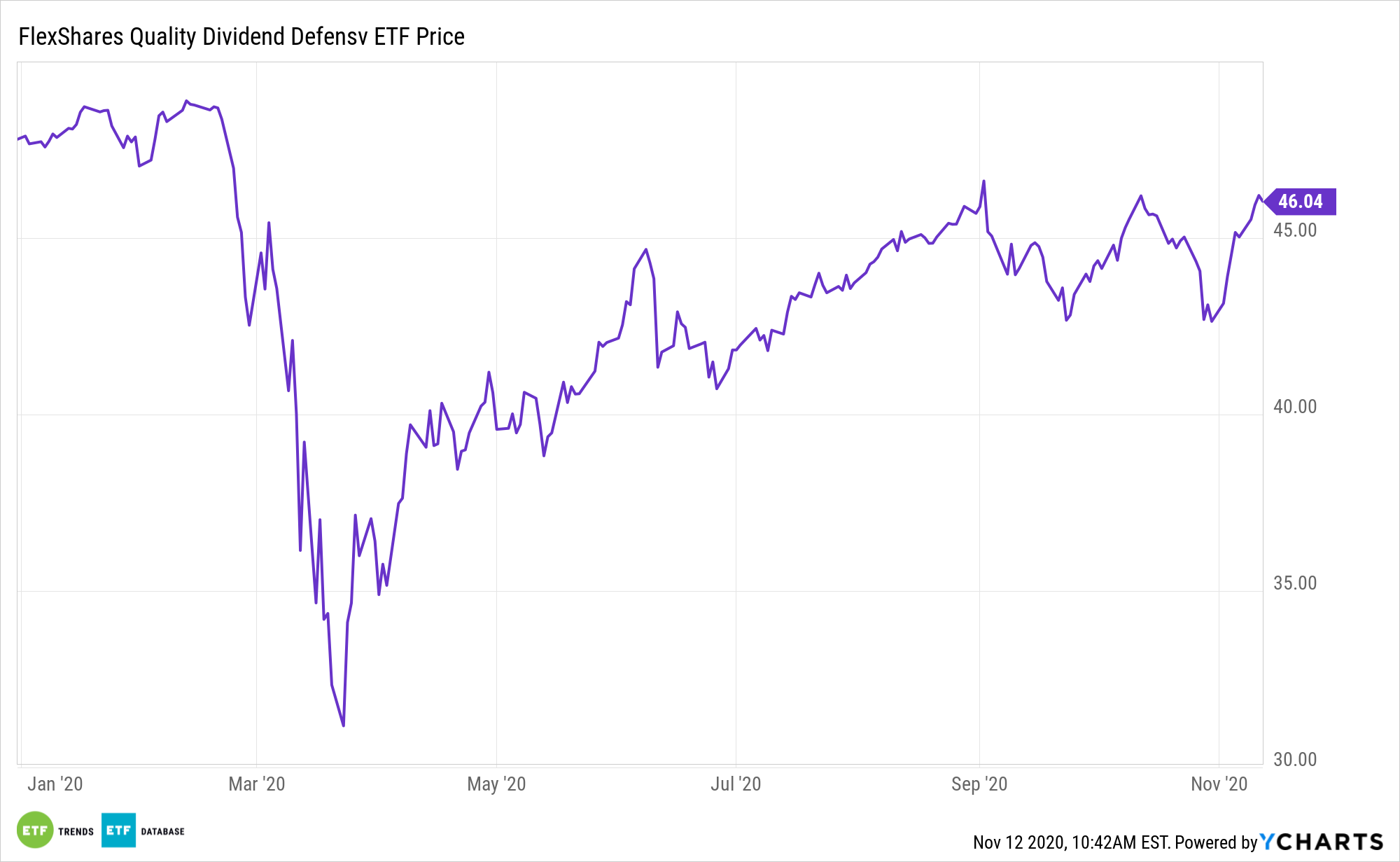The first half of 2020 was utterly forgettable for dividend stocks and their devotees, but that scenario is changing for the better, putting some focus on payout exchange traded funds, including the FlexShares Quality Dividend Defensive Index Fund (NYSEArca: QDEF).
QDEF’s underlying index is designed to reflect the performance of a selection of companies that, in aggregate, possess greater financial strength and stability characteristics relative to the Northern Trust 1250 Index, a float-adjusted market-capitalization weighted index of U.S. domiciled large- and mid-capitalization companies. The fund will invest at least 80% of its total assets (exclusive of collateral held from securities lending) in the securities of the underlying index.

Ned Davis Research notes “that dividend stocks performed in a unusual way during the coronavirus recession, trailing non-dividend payers during both the market decline and the rebound. Normally dividend stocks are a safe haven during times of a recession and market volatility, but in this case the coronavirus pandemic hit key dividend payers like REITS and banks while rewarding internet stocks which don’t pay a dividend,” reports Jesse Pound for CNBC.
Dividend Grower Emphasis
QDEF’s emphasis on dividend growers is particularly relevant in today’s market environment. Dividend-growing companies are also high quality names. Steady dividend payouts have also helped produce improved risked-adjusted returns over time.
“The bottom line is that Dividend Payers are exiting the worst phase of the bull market cycle relative to Non-Payers in their most oversold state in a decade,” according to Ned Davis Research. “Macro conditions are more favorable for investors looking to add dividend stocks to their portfolio, with the important caveat to focus on payers with strong balance sheet.”
Dividends have added significantly to returns over time, contributing approximately 32% of the S&P 500’s total return since 1960. During the return-challenged 1970s, dividends made up nearly three-quarters of S&P 500 returns – while investors earned a cumulative total return of 77% from the S&P 500 in that decade, 60% of that 77% was from dividends.
“One risk investors should keep in mind when examining dividend stocks is the risk that the company might cut the dividend to shore up its balance sheet. Ned Davis Research listed rising interest rates, which could both make dividends less attractive and cut into excess cash for dividend payers, as a possible risk to dividend stocks in the future,” according to CNBC.
QDEF’s quality approach minimizes the risk of widespread negative payout action among the fund’s components.
For more on multi-asset strategies, visit our Multi-Asset Channel.
The opinions and forecasts expressed herein are solely those of Tom Lydon, and may not actually come to pass. Information on this site should not be used or construed as an offer to sell, a solicitation of an offer to buy, or a recommendation for any product.

